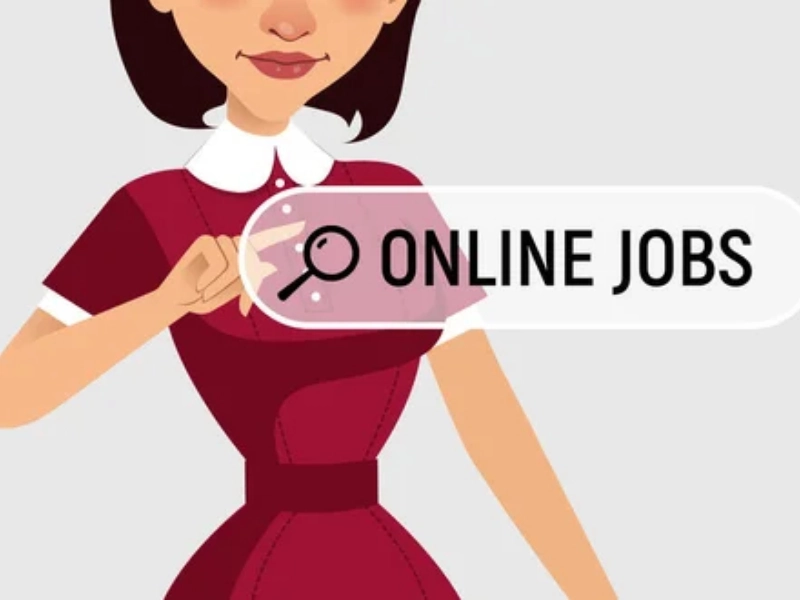Innovative Approaches to Address Typical Problems in Online Employment
Traditional problem-solving methods aren't always effective in fixing a problem. This may occur when opinions diverge over the root cause of an issue or when research produces ambiguous findings. These kinds of problems can be solved using creative problem-solving. When combined with other innovation-based methodologies, like design thinking, it's an excellent tool.
1. Determining the issue

2. Idea generation
 Brainstorming is one of the best techniques to produce ideas, whether you're seeking fresh approaches to enhance an existing product or develop a whole new idea. Using brainstorming approaches, individuals can collaborate uninterruptedly and freely exchange ideas. It's critical to comprehend the difficulties in conducting a brainstorming session, such as groupthink and production blocking, in order to prevent them.
Make sure the people in your brainstorming meetings are varied in terms of their backgrounds and expertise. Then, they are able to offer more original and diverse thoughts. Bringing in a few different brainstorming strategies will also help you determine which approach is most effective for your group.
Using a huge canvas with sticky notes is a common method. At the beginning of each section, write a question or prompt. Invite participants to provide ideas for that prompt in silence. Following the brainstorming session, participants can go over and assess the concepts to find possible answers.
Brainstorming is one of the best techniques to produce ideas, whether you're seeking fresh approaches to enhance an existing product or develop a whole new idea. Using brainstorming approaches, individuals can collaborate uninterruptedly and freely exchange ideas. It's critical to comprehend the difficulties in conducting a brainstorming session, such as groupthink and production blocking, in order to prevent them.
Make sure the people in your brainstorming meetings are varied in terms of their backgrounds and expertise. Then, they are able to offer more original and diverse thoughts. Bringing in a few different brainstorming strategies will also help you determine which approach is most effective for your group.
Using a huge canvas with sticky notes is a common method. At the beginning of each section, write a question or prompt. Invite participants to provide ideas for that prompt in silence. Following the brainstorming session, participants can go over and assess the concepts to find possible answers.
3. Formulating a Scheme
 Business requires the ability to adapt to change, and inventive problem-solving techniques assist organisations in identifying novel solutions that spur expansion. This tool can be most effectively used in conjunction with other innovation-based approaches, such as design thinking, and is helpful for addressing unforeseen issues.
For instance, a vodka firm had to come up with an offline solution using creative problem-solving when trying to reach consumers in Thailand, a nation with stringent rules against alcohol promotion that forbid widespread TV or press advertising. This included creating user accounts on Facebook and email, enabling users to play an online programme that remixes well-known Thai songs, create virtual cocktails, and obtain information about retail locations where they might buy the beverage.
It's crucial to specify when tasks must be done and set explicit deadlines when creating a plan. This will guarantee that everyone in the team understands their roles and is operating on the same page. Establishing a mechanism for staff members to provide feedback is also essential, allowing everyone to make necessary improvements to the plan.
Business requires the ability to adapt to change, and inventive problem-solving techniques assist organisations in identifying novel solutions that spur expansion. This tool can be most effectively used in conjunction with other innovation-based approaches, such as design thinking, and is helpful for addressing unforeseen issues.
For instance, a vodka firm had to come up with an offline solution using creative problem-solving when trying to reach consumers in Thailand, a nation with stringent rules against alcohol promotion that forbid widespread TV or press advertising. This included creating user accounts on Facebook and email, enabling users to play an online programme that remixes well-known Thai songs, create virtual cocktails, and obtain information about retail locations where they might buy the beverage.
It's crucial to specify when tasks must be done and set explicit deadlines when creating a plan. This will guarantee that everyone in the team understands their roles and is operating on the same page. Establishing a mechanism for staff members to provide feedback is also essential, allowing everyone to make necessary improvements to the plan.
4. Putting the Plan into Action
 The last phase of creative problem-solving is carrying out your designed plan. This entails setting project completion benchmarks and informing your team members of them. It also entails making certain that your remote employees have access to the tools, materials, and resources they require to finish their job.
It's also critical to recognise and honour accomplishments. Recognising your remote workers' accomplishments, whether via Slack high-five week or virtual shoutouts at weekly Zoom happy hours, can help them feel more connected to the company and more driven to meet or surpass goals. This is especially crucial for hybrid teams that have both full-time workers and independent contractors.
The last phase of creative problem-solving is carrying out your designed plan. This entails setting project completion benchmarks and informing your team members of them. It also entails making certain that your remote employees have access to the tools, materials, and resources they require to finish their job.
It's also critical to recognise and honour accomplishments. Recognising your remote workers' accomplishments, whether via Slack high-five week or virtual shoutouts at weekly Zoom happy hours, can help them feel more connected to the company and more driven to meet or surpass goals. This is especially crucial for hybrid teams that have both full-time workers and independent contractors.








